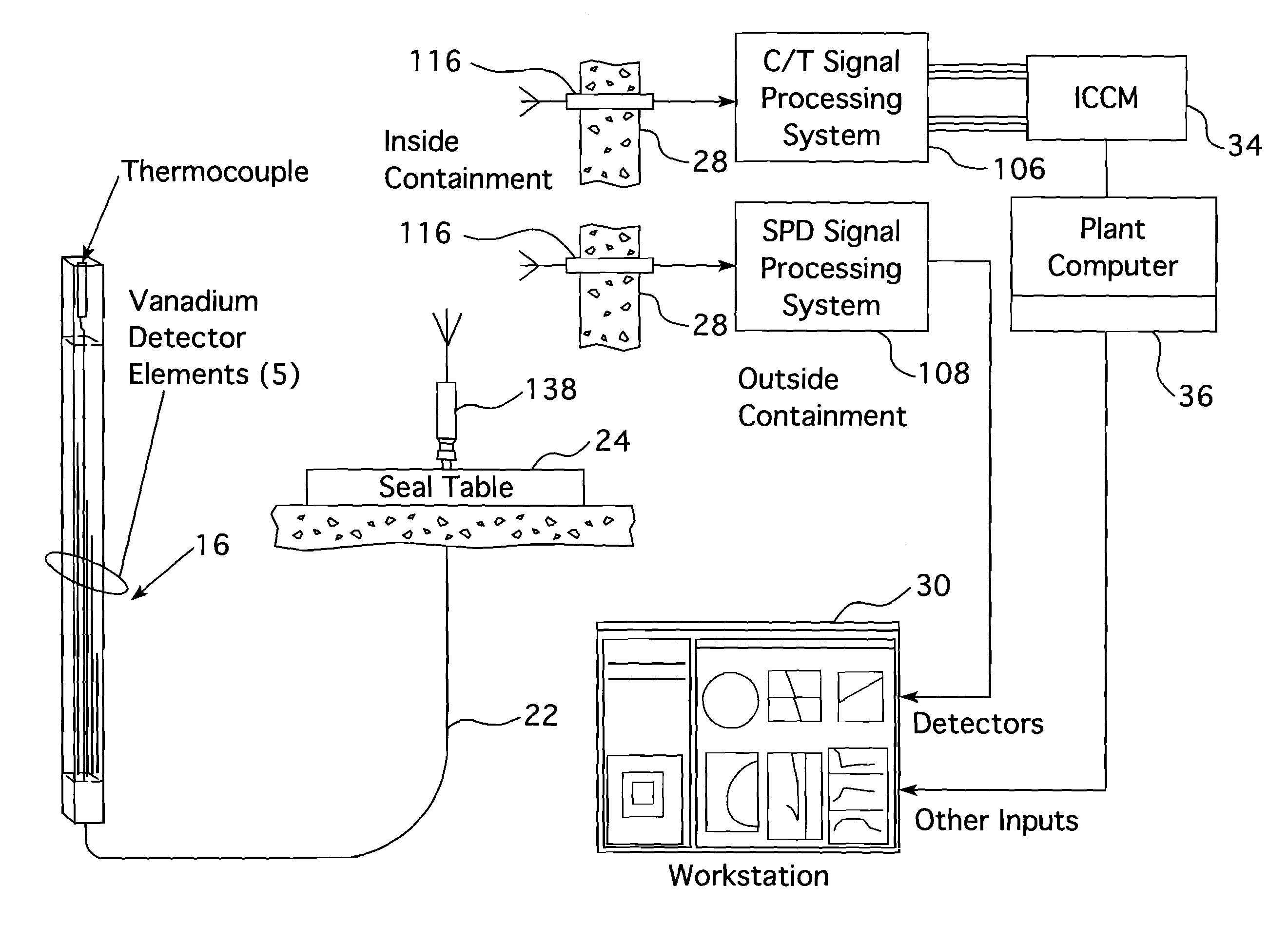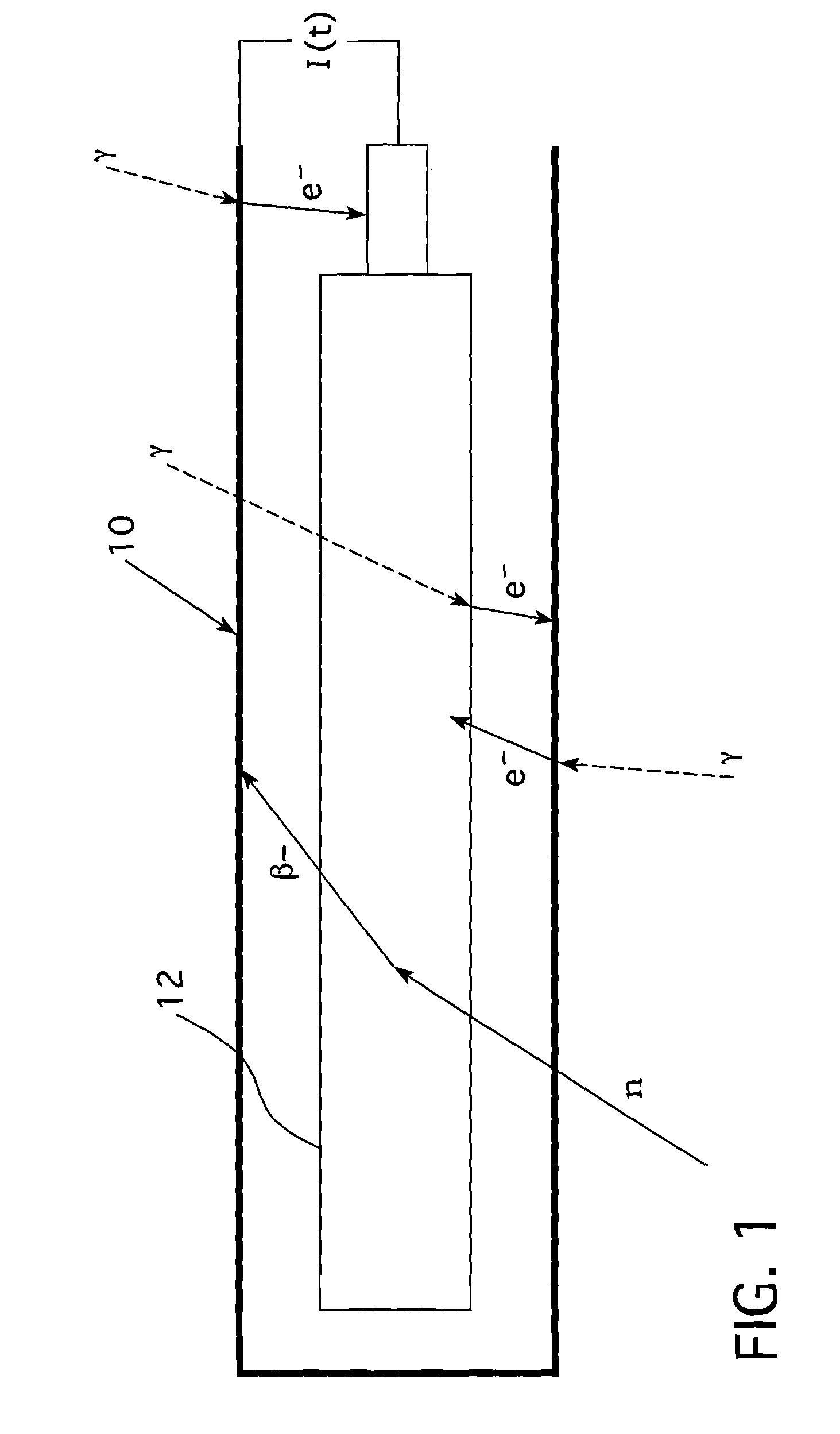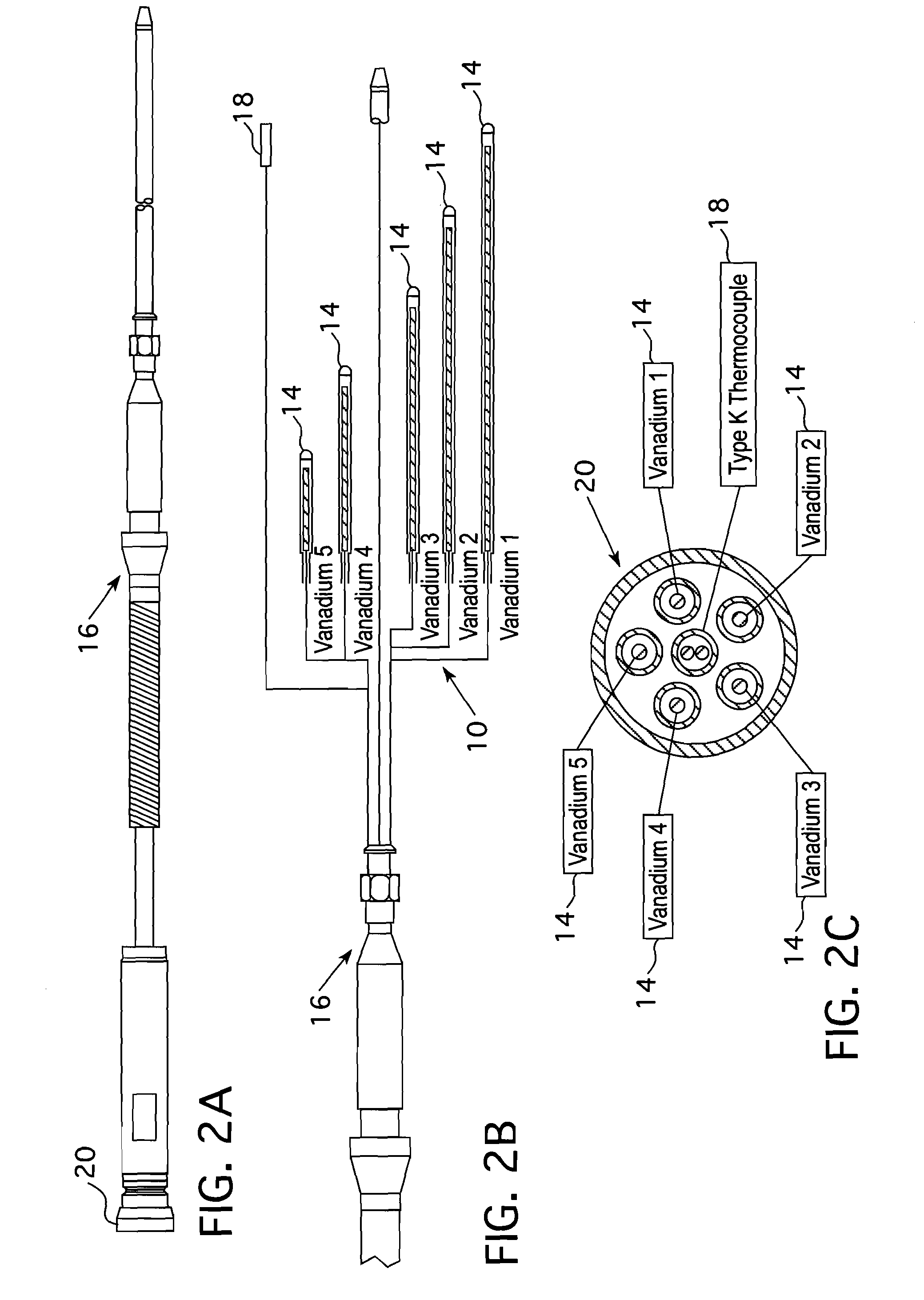Self-powered wireless in-core detector
a detector and wireless technology, applied in the field of methods and apparatuses, can solve the problems of complex moving detector drives and routing systems, high equipment costs, and easy failure, and achieve the effect of avoiding the majority of costs
- Summary
- Abstract
- Description
- Claims
- Application Information
AI Technical Summary
Benefits of technology
Problems solved by technology
Method used
Image
Examples
Embodiment Construction
[0032]The primary side of nuclear power generating systems which are cooled with water under pressure comprises a closed circuit which is isolated and in heat exchange relationship with a secondary side for the production of useful energy. The primary side comprises the reactor vessel enclosing a core internal structure that supports a plurality of fuel assemblies containing fissile material, the primary circuit within heat exchange steam generators, the inner volume of a pressurizer, pumps and pipes for circulating pressurized water; the pipes connecting each of the steam generators and pumps to the reactor vessel independently. Each of the parts of the primary side comprising a steam generator, a pump, and a system of pipes which are connected to the vessel form a loop of the primary side.
[0033]For the purpose of illustration, FIG. 4 shows a simplified nuclear reactor primary system, including a generally cylindrical reactor pressure vessel 40 having a closure head 42 enclosing a ...
PUM
 Login to View More
Login to View More Abstract
Description
Claims
Application Information
 Login to View More
Login to View More - R&D
- Intellectual Property
- Life Sciences
- Materials
- Tech Scout
- Unparalleled Data Quality
- Higher Quality Content
- 60% Fewer Hallucinations
Browse by: Latest US Patents, China's latest patents, Technical Efficacy Thesaurus, Application Domain, Technology Topic, Popular Technical Reports.
© 2025 PatSnap. All rights reserved.Legal|Privacy policy|Modern Slavery Act Transparency Statement|Sitemap|About US| Contact US: help@patsnap.com



